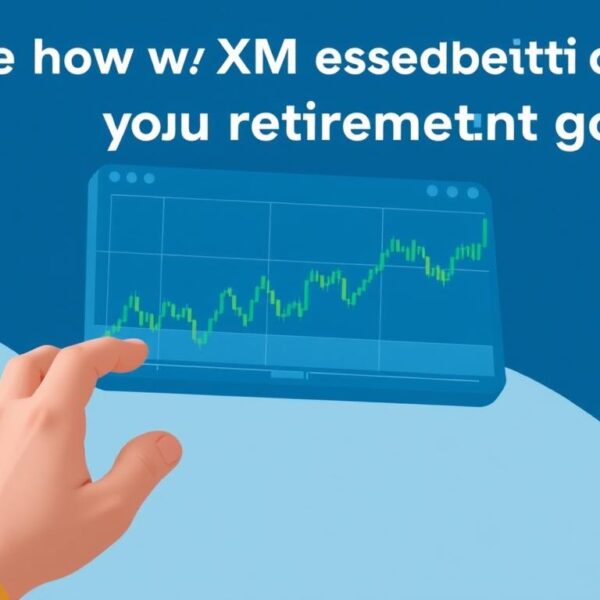In Sotheby’s auction house, a vintage Hermès Birkin bag sold for over $300,000. This event caught the attention of both investors and fashion lovers. It shows that luxury goods are more than just items – they’re smart investments that go beyond regular markets.
The luxury market has shown strong growth, increasing by 6% each year from 1996 to 2022. This is twice as fast as the global GDP growth. Experts believe the luxury market will hit $600 billion by 2030, offering great opportunities for those investing in high-end fashion and premium accessories.
Luxury goods keep attracting careful investors, even when the economy is down. Their value holds up well during tough times, making them a unique investment choice. From rare watches to limited designer items, luxury goods are more than symbols of status.
Key Takeaways
- Luxury goods market expected to reach $600 billion by 2030
- High-end investments show resilience during economic challenges
- Vintage and rare items can appreciate significantly in value
- Luxury market grows faster than global GDP
- Emerging markets are driving luxury goods investments
- Alternative investment opportunities expanding in luxury sector
Understanding Luxury Goods Market Trends
The luxury goods market is always changing, offering great chances for those who want an opulent lifestyle. Trends show a world where fine jewelry and fancy watches are more than just things to wear. They are smart investments.
Market Performance Insights
The luxury world has shown it can bounce back, growing at a 5 percent rate from 2019 to 2023. Most of this growth came from higher prices, showing the market’s strength.
| Market Segment | Growth Rate | Key Characteristics |
|---|---|---|
| Global Luxury Market | 5% CAGR | Reached $1.6 trillion in 2023 |
| Chinese Luxury Market | 18% Annual Growth | Significant regional expansion |
| Future Projections | 1-3% Annually | Expected growth from 2024-2027 |
Investment Landscape
New markets are changing how people buy luxury items. While the US and Europe might see slow growth, places like the Middle East and Asia-Pacific are booming.
- Ultra-high-net-worth individuals drive high-end luxury market
- Middle-income consumers increasingly participate in luxury spending
- Technological innovations create new luxury investment categories
Brands like LVMH show the luxury market’s big potential. They became the first European company to hit a $500 billion market value. Their success proves luxury goods are smart investments.
The Appeal of Luxury Goods as Investments
Luxury goods are a special kind of investment that goes beyond money. They mix emotional value with the chance for financial gain. The global luxury market, worth over $2.5 trillion, is a big draw for those looking for new ways to invest.
Emotional Value Meets Financial Potential
Luxury investments are special because they mix personal joy with the chance for profit. People who buy luxury items look for both pleasure and value. The benefits of investing in luxury goods include:
- They hold up well even when the economy is down
- They have a strong track record of success
- They often make high profits
- They can be sold in markets all over the world
Exclusivity as an Investment Driver
What makes luxury goods valuable is their exclusivity. Unique items and limited editions attract investors. Luxury brands with long histories make it hard for new ones to enter, keeping their value high.
The luxury market does very well, with the top 15 brands making up most of the sales. Brands that make over $5 billion are the best investment opportunities. They offer a chance to invest in something more than just money.
Luxury is not about buying expensive things; it’s about acquiring assets with enduring value and exceptional craftsmanship.
Smart investors see luxury goods as more than just things to buy. They are a way to keep wealth safe and even grow it.
The Impact of Economic Indicators
Economic indicators shape the world of luxury goods investments. They affect how much people spend and how well markets do for Premium Accessories and Prestige Brands.
The economic scene brings both challenges and chances for Luxury Goods investors. Inflation rates have changed a lot, going from 8.8% in 2022 to 4.1% by 2024. Currency changes also affect luxury markets worldwide.
Inflation and Luxury Spending Patterns
Recent data shows interesting things about luxury markets:
- Luxury brands raised prices by almost 17% in 2020
- Women’s handbags saw a 22% price jump from 2019 to 2022
- Luxury goods prices went up 25% in the first five months of 2022
Currency Fluctuations and Global Trade
Luxury brands are very flexible during tough economic times. They use smart pricing and adjust to local markets to keep customers interested. The US and China, key markets, are growing well despite economic hurdles.
Companies like LVMH have handled economic ups and downs well. They raised handbag prices by 20% but still kept demand high. This shows Luxury Goods are valuable for both investors and consumers.
Emerging Categories in Luxury Goods
The luxury goods market is changing fast. New ideas are making High-End Fashion and Opulent Lifestyle more exciting. People want unique experiences and products that show who they are.
Sustainable Luxury: Eco-Friendly Products
Sustainability is key in luxury now. Brands focus on making things better for the planet. This shows they care about more than just being exclusive.
- Organic materials replacing synthetic fabrics
- Carbon-neutral manufacturing processes
- Ethical sourcing of raw materials
Luxury brands are going green. They use recycled ocean plastics and create sustainable textiles. These products still look and feel high-end.
The Rise of Digital Luxury Goods
Digital platforms are opening up new luxury opportunities. Virtual fashion, NFTs, and blockchain-based assets are changing what luxury means.
- Virtual fashion collections
- Digital art investments
- Blockchain-authenticated luxury items
Technology is blending with traditional luxury. Younger people love digital platforms for their unique, interactive luxury experiences.
High-Profile Brands Leading the Market
The luxury goods sector is led by Prestige Brands known for their innovation and heritage. These companies excel in bespoke craftsmanship. They also draw in a growing number of affluent clients.
Louis Vuitton: A Legacy of Innovation
Louis Vuitton is a top example of luxury brand success. It makes up about 33% of LVMH’s sales and 50% of profits. The brand keeps its global fame strong.
- Founded in 1854, Louis Vuitton pioneered luxury travel accessories
- Operates over 5,600 stores worldwide
- Consistently ranks among top 3 global luxury brands
Gucci: Cultural Relevance and Modern Branding
Gucci is another leader in luxury innovation. As a key brand in the Kering group, it brings in about 50% of the company’s revenue. It has successfully appealed to younger markets.
- Established in 1921 in Florence, Italy
- Known for provocative marketing strategies
- Successful in attracting millennial and Gen Z consumers
These brands show that staying on top in luxury means always innovating yet keeping true to your roots. Their focus on exclusivity and quality draws in investors and luxury lovers worldwide.
The Wealth of HNWIs (High-Net-Worth Individuals)
The world of wealth is changing fast. High-Net-Worth Individuals (HNWIs) are key players in the luxury goods market. By 2024, the number of HNWIs worldwide went up by 4.7%. This shows their strong economic position and investment power.
Investment Trends for Affluent Clientele
Wealthy investors are spreading out their money in smart ways. They’re looking into luxury goods as investments. Some trends include:
- Buying exquisite timepieces as alternative assets
- Putting 25-40% of their wealth into real things
- Seeking out rare luxury items that could go up in value
Wealth Management Strategies
Wealth advisors are using new methods to help rich clients. They guide them through the complex world of luxury goods by:
- Studying market trends
- Checking if high-value items are real
- Finding good places to invest
The United States has the most HNWIs, with 5.5 million. New York City is home to 349,500 of the world’s richest people. These investors are looking for unique luxury items that can make money and bring joy.
Luxury goods are more than just buys—they’re smart investments for the wealthy.
Luxury Goods in the Age of E-Commerce
The digital world has changed how we see High-End Fashion and Premium Accessories. Now, luxury brands can reach out to customers in new ways online. E-commerce is key for buying and experiencing luxury items.
Digital platforms have changed luxury retail a lot. There’s been a big growth in the sector:
- E-commerce now accounts for 18% of luxury goods sales in 2023
- Mobile devices drive over 50% of luxury shopping searches
- 75% of luxury shoppers own smartphones
Online Platforms and Their Growth
Luxury brands are making digital stores that are both exclusive and easy to use. Generative AI is helping make online shopping more personal. It lets brands create unique digital spaces for customers.
The Importance of Social Media Marketing
Social media is vital for luxury brands. TikTok and other platforms are great for reaching young people. About 30% of luxury shoppers talk about products on social media.
The future of luxury retail lies in creating digital experiences that mirror the sophistication of traditional high-end shopping.
Here are some key strategies for success:
- Developing mobile-responsive websites
- Creating engaging social media content
- Implementing personalized digital shopping experiences
Investing in Vintage and Pre-Owned Luxury Items
The luxury market is changing fast. Now, vintage and pre-owned items are seen as great investments. People are drawn to Fine Jewelry and Exquisite Timepieces from the past.
Vintage luxury goods are getting more popular. By 2027, almost 40% of luxury buyers will focus on vintage items. This shows a big growth in the market.
The Collectability of Vintage Luxury Goods
Vintage luxury items have many good points for investors:
- They can really increase in value.
- They have special historical and cultural value.
- There’s less of them, making them Exclusive.
- They’re better for the planet than new luxury items.
Platforms for Buying and Selling Pre-Owned Items
The market for used luxury goods has grown a lot. Online sites make it easier to buy and sell. Now, you can find:
- Services that check if items are real.
- Details about the item’s condition.
- Clear prices.
- Access to rare items worldwide.
“Vintage luxury items are not just purchases; they’re investments in craftsmanship and history.”
Before investing, do your homework. Not all vintage items will go up in value. Stick to famous brands like Rolex, Chanel, and Hermès for the best chances.
Preparing for the Future of Luxury Investments
The luxury goods market is changing fast, with new opportunities for smart investors. Trends like sustainability, digital innovation, and personal experiences are key. They will shape the future of luxury investments.
Bespoke craftsmanship is now a major factor for top brands. Investors who get what younger buyers want will do well. With 60% of young people looking for eco-friendly luxury, brands like Stella McCartney are leading the way.
Anticipating Future Trends in Consumer Behavior
Technology is changing how we invest in luxury. Online sales have jumped from 12% in 2019 to 23% in 2023. They’re expected to hit 30% by 2025.
Markets like India and Southeast Asia are also growing fast. Luxury sales in these areas could triple by 2030.
Strategies for Diversifying Luxury Investments
Diversifying is key for success. Investors should look at new markets, support sustainable brands, and use digital platforms. The luxury sector needs a mix of old values and new ideas to meet today’s buyers.





